|
|
|
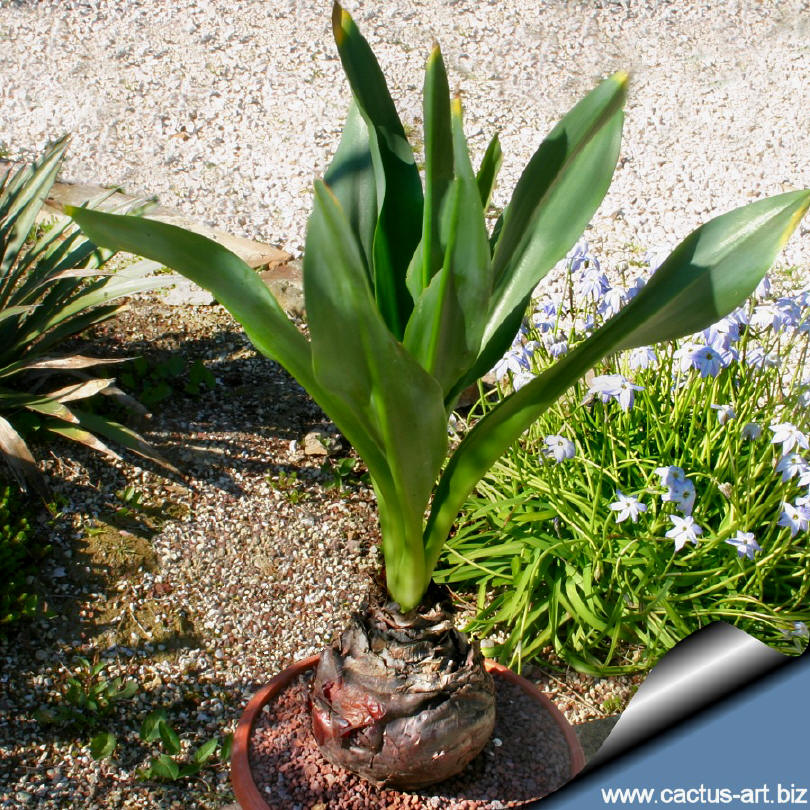
Urginea marittima is
an unmistakable species for it shape and aspect. In the
late summer for the high and characteristic inflorescence, in the other
seasons for the above-ground bulbs and leaves.
|
|
Description: Urginea maritima is the giant among all
Mediterranean geophytes it is a winter active perennial bulb. The plant
is not fragrant even in the flowers..
Bulb: Pyriform with several layers of papery tunics that protect
the bulbs from the sun. The bulbs split dichotomously from the apex
rather than forming basal offsets and in time they grow to massive
clumps up to 20 heads, each one from 12 to 20cm in diameter and weigh 2
to 3,5 kg. The form with brown reddish outer tunics, is sometime
referred as var. rubra and gets to be a bigger size. The
other form has whitish outer tunics and is referred as var. alba.
The big bulbs can last for dozen of years.
Leaves: Broadly sword-shaped, erect, coriaceous, slightly
succulent, dark green with a bluish waxy bloom that can get up to 35cm
long by 10cm wide. The leaf canopy will reach about 60-90cm tall by
60-90cm across. They are basal and emerge in autumn and last till in
spring.
Flower: The inflorescence (a long spike) will shoot up in August
or September while the plant is leafless. There is only one
inflorescence, not branched for bulb, it can reach 1-1,8 meters tall and
is covered with con 50-100, small, star-shaped, white flowers each 1 to
1.5 cm across in the upper one-half. (but some individuals have white
flowers with a distinct pink midrib on the tepals and in extreme cases
the flowers are all pinkish)
Roots: The root system is extensive. The roots are few and quite
succulent.
|
|
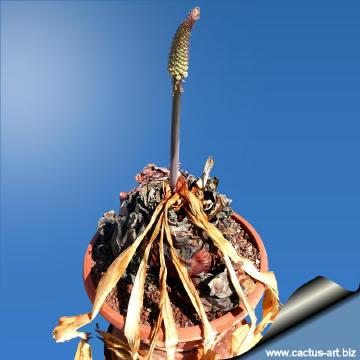 |
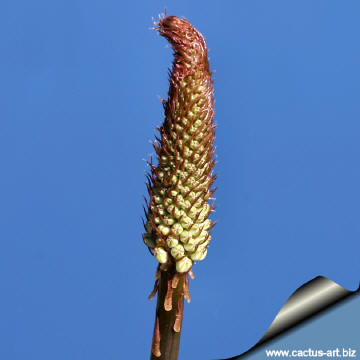 |
|
The inflorescence (a long spike) will shoot up in August or September
while the plant is leafless.
|
|
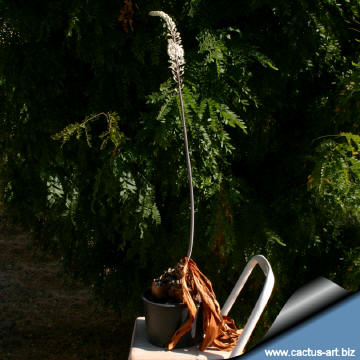 |
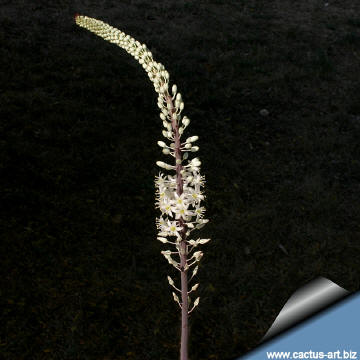
|
|
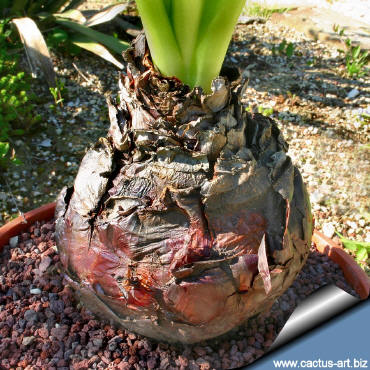 |
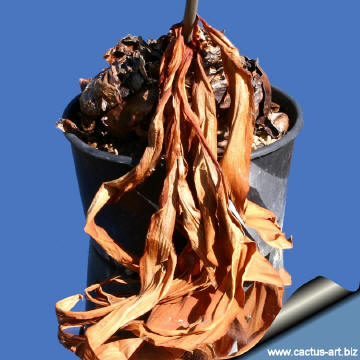 |
|
The bulb is very decorative |
|


Advertising |
|
|
|
Family: Hyacinthaceae (Liliaceae)
Scientific name: Urginea
maritima (L.) Bach 1873
Common Name: White Squill, sea squill , crusader spear.
Etymology: The name Urginea comes from the Algerian tribe of Ben Urgin
|
Synonyms:
- Scilla marittima L.
- Urgėnea scilla Steinh
- Drimia maritima ((L.)Stearn.)
|
Origin: Native to the
Mediterranean coastal regions
Habitat:
It is found in open spaces in sandy or gravely soil and on limestone
cliffs, often under very harsh conditions, with the bulbs totally above
the ground. It grows close to the sea or by far more commonly inland
than on the sea, at an elevation range of 0-600 meters. The bulb resist
to the occasional fires common in the Mediterranean area, and fires don't
harm them at all.
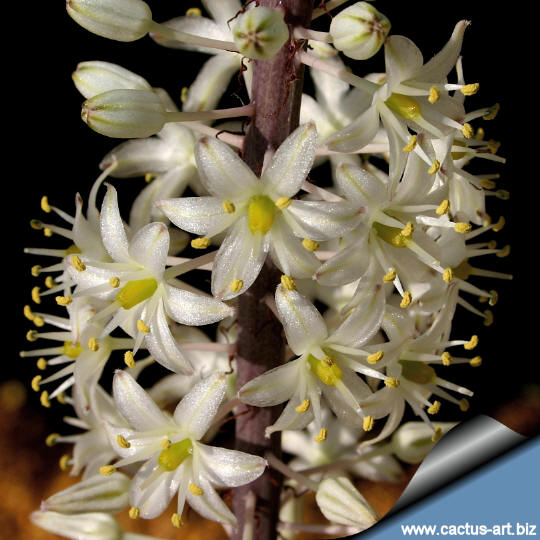
|
|
|
|
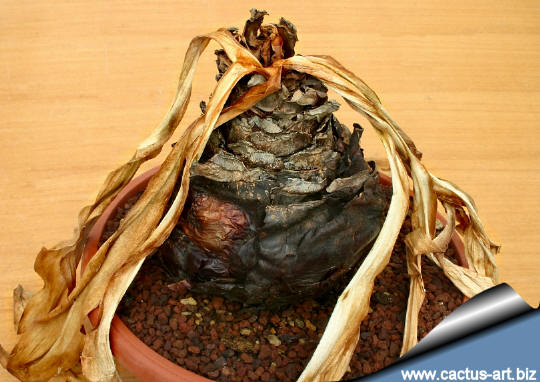
This species is dormant in summer. The new leaves will be produced in
autumn after the shoot up of the long inflorescence.
Cultivation: Easy to grown in a dry and sunny position or under a
deciduous tree so the plants will receive winter sun, it can be grown in
the ground (in warm climate) or in a decorative pot. The bulbs are
winter active and summer dormant, so they should be given supplemental
water in the winter, but none in the summer. The bulbs can be planted
lifted to expose the top one half. When planting in the ground allow
ample room for the bulbs to divide and multiply. Plant in a porous soil
with good drainage.
The foliage is hardy to at least 3° C, while the bulb itself can
tolerate lower temperatures.
Urginea maritima can be
grown in a cactus and succulent garden. It can be placed in a decorative
pot and used as a winter focal point on a patio. Delicate flowers bloom
in summer and the tall stalks dot the landscape creating a beautiful
sight. This species has the same growing cycle of many winter rainfall
South African species like Amaryllis or Brunsvigia,
but foliage resembles the foliage of Mexican Agaves.
|
|
Uses: Poisonous plant.
Rodents don't eat the bulbs since they are poisonous. Repellent and
anti-parasitic agent for insect and mice. The farmers put the whole
plant in granaries and silos.
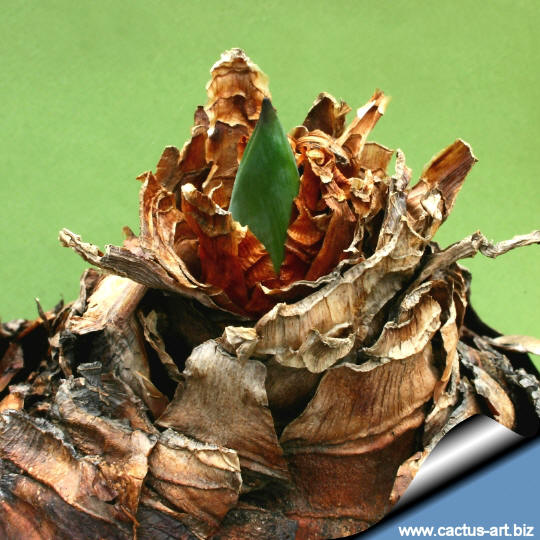 |
|










